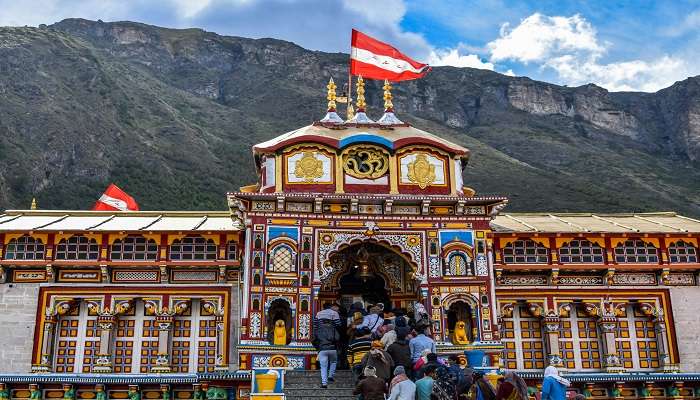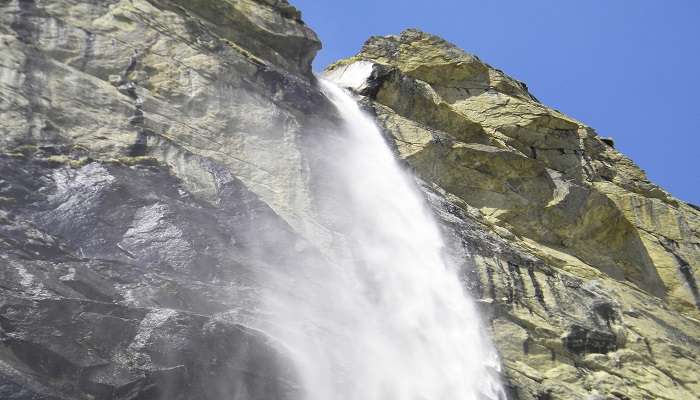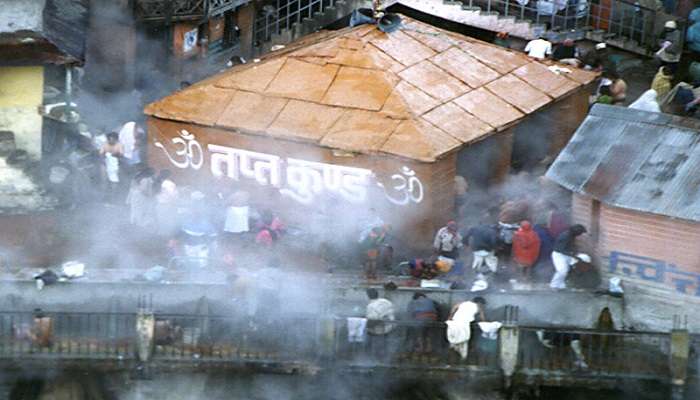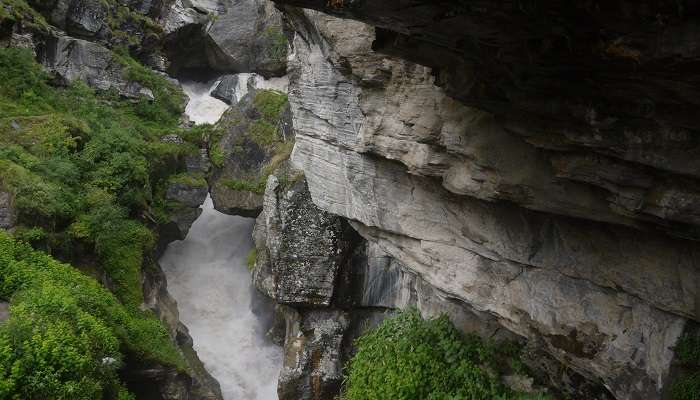Experience The Divine Aura At Shree Badrinath Temple In 2026

Shree Badrinath Temple, also known as Badarinarayana Temple, is a Hindu temple in the religious town of Badrinath. This temple is a symbol of spiritual devotion. Being one of 108 Divya Desams, solely dedicated to Lord Vishnu. The temple is open for six months, from the end of April to the beginning of November. Badrinath Temple is believed to have been established by Adi Shankara in the 8th century. Its location is along the banks of River Alaknanda and opposite the Narayan Parbat Mountain. Pilgrims seek blessings at this divine temple and embrace the majestic aura of the temple.
History Of Shree Badrinath Temple

The temple has no historical record but has some mention of a deity in Vedic Sculptures. History says that this temple was a Buddhist shrine during Ashoka’s reign. The primary reason for this was the spread of Buddhism. Later in the 8th century, Adi Shankara seems to have revived it and made it into a Hindu Pilgrimage Site. A typical Buddhist Temple architecture can be seen in this temple. For six years, Adi Shankara resided in this holy temple and lived in the temple of Kedarnath for the next six months. A traditional story also says that he expelled all the Buddhists from the region. This was made possible with the help of the Parmar Ruler King Kanak Pal. The king’s successors guarded this temple to accommodate and feed the villagers. Badrinath Temple has undergone many renovations and was later expanded by the kings of Garhwal.
Must Read: Places To Visit In Badrinath
Location Of Badrinath

Badrinath is a holy shrine in the Garhwal Himalayas, located in the Chamoli District of Uttarakhand. They lie on the banks of River Alaknanda. The place is situated at an altitude of 3100 feet above sea level. Towering peaks, including Nilkantha and Narayan Parvat, surround the temple. Badrinath is a town that is very famous for its temple. Visitors can see the river flowing on the temple’s right side. Huge snow-clad mountains and peaks overlook the Badrinath Temple. This is a part of the Char Dham Yatra, which includes pilgrimage sites like Kedarnath, Yamunotri, and Gangotri. The journey to Badrinath happens through rugged terrain. The place is accessible from Rishikesh via NH-58. This national highway passes through other profound towns like Joshimath and Chamoli. The journey to Badrinath promises scenic beauty and broad vistas.
Places To Visit In Badrinath
There are many places near Badrinath to visit. Each tourist spot promises a unique experience in the town. Let’s explore some of them:
1. Vasudhara Falls

Vasudhara Falls is a massive waterfall near Badrinath’s temple in Uttarakhand. The falls are set on a background of 145 metres of cliff. Nilkantha, Chaukhambha and Balakun are known mountains around this fall. The water of this fall flows directly down to the Alaknanda River. The river later flows through the right side of the Badrinath Temple. This falls is located 9 km from the temple. The water cascades down from a height of 400 ft with immense pressure. A glacier named Satopanth Glacier is located at the bottom of Vasudhara Falls.
Location: Vasudhara Falls Near Mana Village, Chamoli District, Uttarakhand, India
Distance From The Badrinath Temple: 8 km
Suggested Read: Places To Visit In Uttarakhand In Winter
Suggested Read: Places To Visit In Uttarakhand In Winter
2. Tapta Kund Badrinath

Tapta Kund near shree badrinath temple offers hot water. This hot water spring remains hot throughout the year despite the decreasing temperature that the place witnesses. This place is regarded as Agni Deva’s resident place in Badrinath. It is believed that the water of this hot spring comes from the Garur Shila. Because of its proximity to Badrinath Temple, pilgrims always visit and bathe at Tapta Kund. One of the everyday rituals of this place includes taking a bath and entering the temple to be free of all impurities.
Location: Tapta Kund, Near Badrinath Temple, Badrinath, Chamoli District, Uttarakhand
Distance From The Badrinath Temple: 32 metres
3. Bhim Pul

A very small trek from the Mana will take you to this bridge of stones known as Bhim Pul. History says that Bheem built this bridge for his beloved wife, Draupadi. This place is precisely where the Pandavas started their journey to leave the Earth behind and go to Swargarohini. Draupadi seemed unable to cross the river at the time of the journey, so Bheem threw a huge stone for her to walk on it and cross the river. The rock was placed between the gorge for her to move ahead. Because of this, the place is known as Bhim Pul. It offers an enchanting view of the beautiful valley.
Location: Bhim Pul (Bhim Bridge), Near Mana Village, Chamoli District, Uttarakhand
Distance From The Badrinath Temple: 6.6 km
Suggested Read: Hotels In Badrinath
Cuisine Of Badrinath

The Garhwali tradition and the chilled Himalayan environment highly influence Badrinath’s cuisine. These typical dishes are flavourful and mouth-watering, and everyone should try them.
- Ghahat Ki Dal is a yummy lentil dish made from horse gram and seasoned with spices like cumin and garlic. It is served hot with rice or roti and is very nutritious.
- Chainsoo is a flavourful curry made from black gram dal, or Urad Dal. It is seasoned with ghee, garlic, and cumin seeds. It is served with roti or steamed rice.
- Aloo Ke Gutke consists of spicy boiled potatoes sautéed with local cumin, coriander, and mustard seeds. It can Be served as a snack or as a side dish.
- Rasbhaat is a staple for Badrinath residents. Rice is cooked in buttermilk and later flavoured with cumin seeds and spices like ginger. It is usually preferred as a side dish.
Further Read: Things To Do In Badrinath
Located in the Chamoli district, shree badrinath temple symbolises devotion and blessings. Its ancient architecture calls for tourists and pilgrims from borders and beyond. Badrinath, one of the Char Dham pilgrimage sites, holds immense importance among the Hindus of this country. The place has a majestic aura that binds with the holy temple and nearby tourist places. Visitors shall glance upon its strategic importance and embrace the famous spots nearby with a trip to Badrinath. Pilgrims walk up for miles to seek the blessings of Lord Badrinatha for ages.
For our editorial codes of conduct and copyright disclaimer, please click here.
Cover Image Credit: ShashankMalathisha for Wikimedia Commons
Frequently Asked Questions About Shree Badrinath Temple
What is the cost of VIP Darshan at Badrinath?
The cost of VIP Darshan at Badrinath Temple is INR 500 per person. Badrinath is a busy temple, and crowds flock to it. The temple is only open from the end of April to the beginning of November.
What is remarkable in Badrinath Temple?
Badrinath is the temple where Hindus come to pay oblations to their ancestors. They visit the temple to seek the blessings of Lord Badrinath and take a bath in the holy river of Alaknanda. The dip purifies the soul.
Which Lord is at Badrinath Temple?
Lord Vishnu is worshipped at the Badrinath Temple, which is considered one of the holiest Hindu shrines in the country. This shrine is dedicated to Lord Vishnu in the Chamoli district of Uttarakhand.
Which goddess is in Badrinath Temple?
Mythology tells that when Lord Vishnu came to meditate in one of the Himalayan mountains, his wife Goddess Laxmi took the form of a wild berry, traditionally called “Badri,” and offered him shade.
What to buy from Badrinath Temple?
Numerous things are bought from the Badrinath Temple as a form of Prasad. Items such as Rudraksha beads, prayer shawls, herbal and ayurvedic products, and local sweets should be purchased.
People Also Read:
Shree Jagannath Temple Kanipakam Vinayaka Temple Kote Venkataramana Temple

As a Travel Content Writer, I live to conquer the world of globetrotting with words. With my unquenchable thirst for storytelling, I believe that my words will inspire you to travel around the world’s breathtaking landscapes. As for me, I am an unapologetic selenophile, who loves to wander around in a starry night!











